Investing in Green Energy - Is it Profitable?
In a world increasingly focused on sustainability and environmental responsibility, investing in green energy has become more than just a trend; it’s a movement. As we navigate through the complexities of climate change and the urgent need for renewable solutions, many investors are asking themselves: Is this a smart investment? The answer is not as straightforward as it seems. While the potential for profitability exists, it’s essential to dig deeper into the factors that influence this burgeoning market.
Green energy investments refer to putting money into projects and companies that produce energy from renewable sources such as solar, wind, and hydroelectric systems. These energy sources are not only sustainable but also crucial in reducing our carbon footprint. The significance of these investments cannot be overstated, as they align with global efforts to combat climate change and promote a cleaner environment. Investors are increasingly drawn to the idea of supporting technologies that can lead to a more sustainable future while also generating returns. But what does the landscape look like today?
As we explore the profitability of green energy investments, it’s crucial to consider current market trends. The industry has seen remarkable growth over the past decade, driven by technological advancements and a surge in demand for sustainable energy solutions. According to recent reports, global investments in renewable energy are expected to reach $2.6 trillion by 2025. This growth is fueled by both consumer demand for cleaner energy and government policies that support the transition towards renewable sources.
Moreover, the COVID-19 pandemic has accelerated the shift towards green energy as governments worldwide prioritize sustainability in their recovery plans. This shift presents a unique opportunity for investors looking to capitalize on the green energy wave. However, potential investors must also be aware of the challenges and risks that accompany these investments.
In summary, while investing in green energy can be profitable, it’s essential to approach it with a well-informed strategy. The market is evolving rapidly, and staying updated on trends, technologies, and policies will be crucial in making sound investment decisions. As we delve deeper into this topic, we’ll explore specific renewable energy sources, government incentives, and the risks associated with these investments.
- What are the main types of green energy investments? Common types include solar, wind, hydroelectric, and biomass energy projects.
- Are there government incentives for green energy investments? Yes, many governments offer tax credits, grants, and subsidies to encourage investments in renewable energy.
- What are the risks associated with investing in green energy? Risks include market volatility, regulatory changes, and technological uncertainties.
- How can I start investing in green energy? You can start by researching companies in the renewable sector, investing in green mutual funds, or considering green bonds.
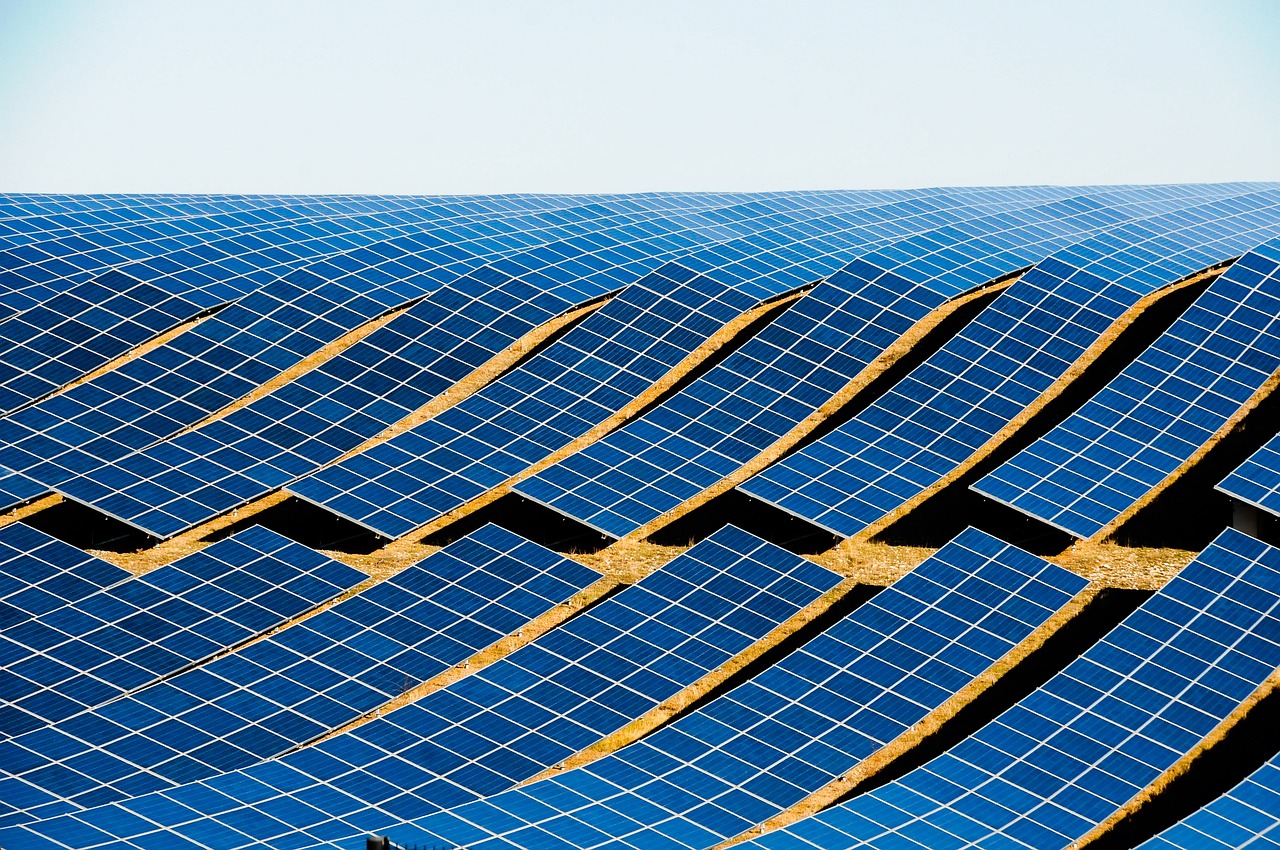
Understanding Green Energy Investments
In today's world, the term green energy investments has become a buzzword, capturing the attention of savvy investors and environmental enthusiasts alike. But what exactly does it mean? At its core, green energy investments refer to the allocation of funds into projects or companies that produce energy from renewable sources. This includes technologies like solar, wind, hydroelectric, and geothermal energy. The significance of these investments cannot be overstated, especially in a time when climate change and environmental degradation are pressing global issues.
As we witness a shift towards sustainability, the popularity of green energy investments is skyrocketing. Investors are not just looking for financial returns anymore; they are also seeking to make a positive impact on the planet. Imagine being part of a movement that not only fills your pockets but also helps save the Earth. It's like planting a tree that grows both your wealth and a healthier environment!
But why the sudden surge in interest? One of the key factors is the growing awareness of the environmental consequences of traditional energy sources. With fossil fuels contributing significantly to pollution and climate change, there is an urgent need for alternatives. Governments worldwide are recognizing this need and are implementing policies that promote renewable energy. These policies often come with incentives, making green energy investments not only a moral choice but a financially savvy one too.
Moreover, as technology advances, the cost of renewable energy production continues to decrease. For instance, the price of solar panels has dropped dramatically over the past decade, making solar energy more accessible than ever. This trend is not just a fleeting moment; it's part of a broader movement towards a sustainable future. Investors are increasingly seeing green energy as a lucrative opportunity, with many projecting that the market will continue to expand rapidly.
In summary, understanding green energy investments is crucial for anyone looking to navigate the evolving landscape of the energy market. These investments offer a unique blend of profitability and purpose, allowing investors to contribute to a sustainable future while potentially reaping significant financial rewards. As we delve deeper into this topic, we will explore the various facets of green energy investments, from market trends to the risks involved, ensuring you are well-equipped to make informed decisions.
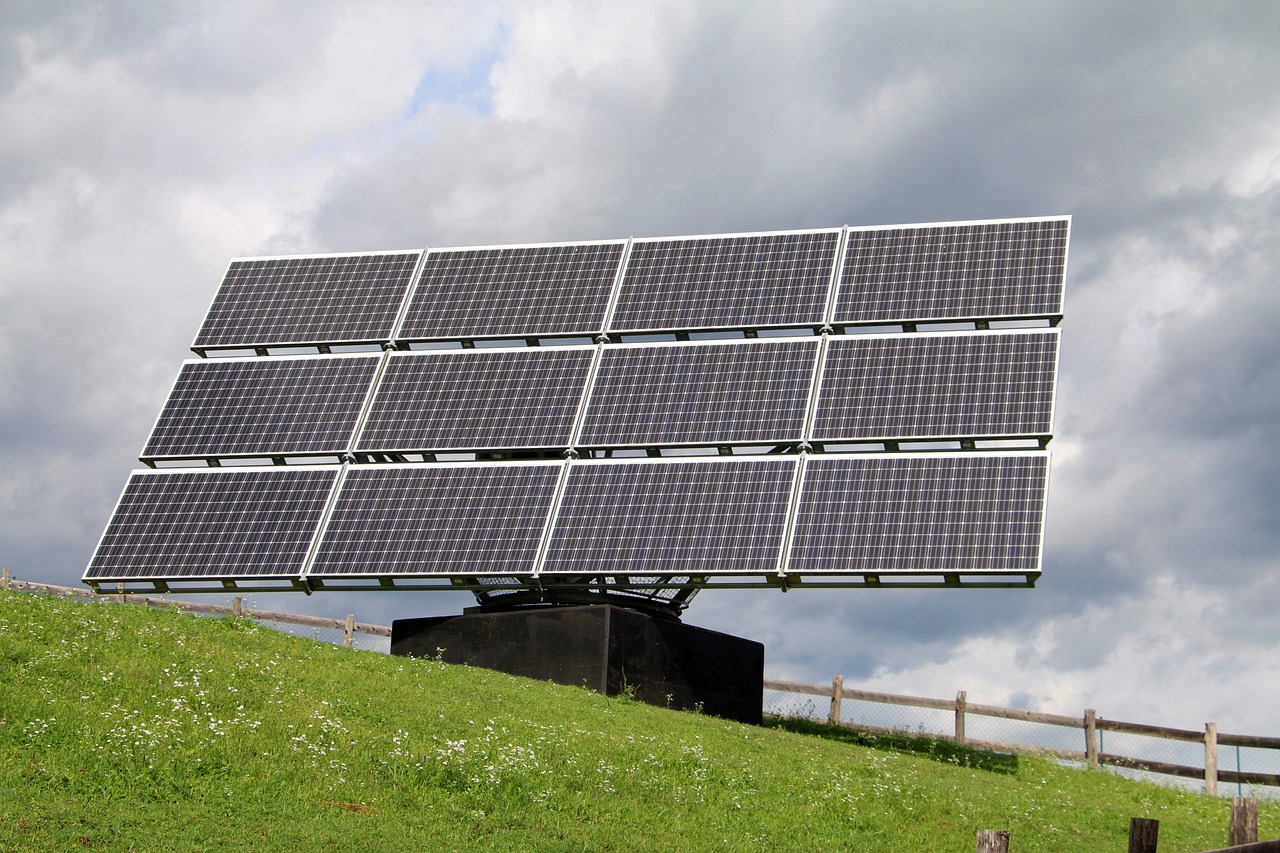
Market Trends in Green Energy
As we navigate through the 21st century, the green energy sector is witnessing an unprecedented transformation. The shift towards renewable energy sources is not just a trend; it's a global movement fueled by the urgent need to combat climate change and reduce our carbon footprint. Investors are increasingly recognizing the potential of green energy as a profitable venture, and this is evident in the rapid growth of the market. In fact, projections indicate that the global renewable energy market is expected to reach a staggering $2.15 trillion by 2025, showcasing a compound annual growth rate (CAGR) of over 8%.
One of the most notable trends is the rise of emerging technologies in the renewable sector. Innovations such as smart grids, energy storage solutions, and advanced solar panels are revolutionizing how we generate and consume energy. For instance, the advent of battery storage technology allows for energy to be stored during peak production times and used later, making renewable energy sources more reliable and efficient. This technological advancement not only enhances the profitability of green energy investments but also attracts a broader range of investors.
Moreover, the increasing demand for sustainable energy solutions is reshaping the market landscape. Consumers are becoming more environmentally conscious, leading to a surge in demand for clean energy alternatives. A recent survey revealed that over 70% of consumers are willing to pay a premium for products powered by renewable energy. This shift in consumer behavior is compelling businesses to adopt sustainable practices, further driving investments in green energy.
In addition to technological advancements and consumer demand, government policies play a pivotal role in shaping market trends. Many countries are implementing incentives and subsidies to encourage investments in renewable energy. For instance, the United States has introduced tax credits for solar and wind energy projects, significantly boosting investor confidence. Below is a table illustrating some key government incentives across various countries:
| Country | Incentive Type | Description |
|---|---|---|
| USA | Tax Credit | Investment Tax Credit (ITC) for solar projects. |
| Germany | Feed-in Tariff | Guaranteed payments for renewable energy producers. |
| China | Subsidies | Financial support for wind and solar energy projects. |
| India | Renewable Purchase Obligation | Mandates purchase of renewable energy by utilities. |
These incentives not only enhance the profitability of green energy investments but also signal a strong commitment from governments towards a sustainable future. As the world continues to grapple with environmental challenges, the green energy market is poised for significant growth, offering investors a wealth of opportunities.
In conclusion, the market trends in green energy are characterized by rapid technological advancements, increasing consumer demand for sustainable solutions, and robust government support. These factors collectively create a fertile ground for investment, making green energy not just a responsible choice but a financially rewarding one as well.

Renewable Energy Sources
When we talk about , we’re diving into a world filled with potential and promise. These energy sources are not just trendy buzzwords; they represent a significant shift in how we think about power generation. Imagine harnessing the sun's rays or the wind's breath to create energy that is clean, sustainable, and abundant. This transition to renewable energy is not merely an environmental necessity; it’s also a lucrative investment opportunity waiting to be tapped.
There are several key players in the renewable energy arena, each with unique characteristics that attract investors. Let’s break down some of the most prominent sources:
- Solar Energy: This is perhaps the most recognized form of renewable energy. Solar panels convert sunlight directly into electricity, making it a popular choice for both residential and commercial applications. The technology has advanced significantly, reducing costs and increasing efficiency, which makes it an appealing option for investors.
- Wind Energy: Harnessing wind through turbines has become a major player in the energy market. Wind farms can generate substantial amounts of electricity, especially in regions with consistent wind patterns. The scalability of wind projects—from small installations to massive offshore farms—offers diverse investment opportunities.
- Hydroelectric Power: Utilizing the flow of water to generate electricity, hydroelectric power is one of the oldest forms of renewable energy. It provides a reliable and consistent energy supply, making it a stable investment option. However, environmental considerations and regulatory hurdles can complicate new projects.
Investors are increasingly drawn to these renewable energy sources not just for their environmental benefits but also for their financial viability. For instance, the global solar energy market alone is projected to reach nearly $223 billion by 2026, according to industry reports. This growth is fueled by technological advancements, decreasing costs, and favorable government policies. In contrast, traditional fossil fuels are facing a more uncertain future due to regulatory pressures and the global push for sustainability.
Moreover, renewable energy investments are often seen as a hedge against market volatility. As the world shifts towards cleaner energy, companies that adapt to these changes are likely to thrive. This shift is not just a trend; it's a fundamental change in how we produce and consume energy. By investing in renewable energy sources, you’re not just putting your money into a green initiative; you’re positioning yourself at the forefront of a burgeoning market.
In conclusion, the landscape of renewable energy sources is vibrant and full of opportunities. With the right knowledge and strategic planning, investors can tap into this dynamic sector, reaping both financial rewards and contributing to a sustainable future. As we continue to explore the potential of green energy, it’s essential to keep an eye on emerging technologies and market trends that can further enhance profitability.
Q1: What are the main benefits of investing in renewable energy?
A1: Investing in renewable energy can lead to significant financial returns, contribute to environmental sustainability, and provide a hedge against traditional energy market volatility.
Q2: Are there government incentives for renewable energy investments?
A2: Yes, many governments offer subsidies, tax credits, and other incentives to encourage investments in renewable energy projects, making them more attractive to investors.
Q3: What risks should investors be aware of in renewable energy?
A3: Investors should consider market volatility, regulatory changes, and technological uncertainties that could impact the profitability of their investments in renewable energy.

Solar Energy Investments
Investing in solar energy has become one of the most attractive options for those looking to enter the green energy market. The sun is a powerful and abundant resource, and with advancements in technology, the potential for profitability is soaring. Imagine harnessing the energy of the sun to not only power homes and businesses but also to generate a significant return on your investment. Sounds appealing, right? Well, let’s dive deeper into the advantages and challenges of solar energy investments.
One of the most significant advantages of investing in solar energy is the **decreasing cost of solar technology**. Over the past decade, the price of solar panels has dropped dramatically, making it easier for both individuals and companies to adopt solar solutions. According to the International Renewable Energy Agency (IRENA), the cost of solar photovoltaic (PV) systems has decreased by around 82% since 2010. This trend not only makes solar energy more accessible but also enhances the potential for profitability as the return on investment improves.
Additionally, government incentives play a crucial role in making solar investments more attractive. Many countries offer **tax credits**, **grants**, and **subsidies** to encourage the adoption of renewable energy sources. For instance, in the United States, the federal solar tax credit allows investors to deduct a significant percentage of the cost of installing solar systems from their federal taxes. This can substantially reduce the upfront costs, making solar investments even more appealing.
However, like any investment, there are challenges to consider. One major concern is the **intermittency of solar energy**. Solar power generation is dependent on sunlight, which means it can be less reliable during cloudy days or nighttime. To mitigate this risk, investors often look into battery storage solutions that can store excess energy generated during sunny periods for use during less favorable conditions. Although these solutions can add to the initial investment, they are becoming increasingly efficient and affordable.
Moreover, the installation and maintenance of solar panels require careful planning and consideration. Investors must evaluate factors such as location, installation costs, and the potential return over time. It’s essential to conduct a thorough analysis to ensure that the investment aligns with financial goals. For those who may not have the expertise, partnering with reputable solar companies can provide valuable insights and support throughout the process.
In summary, solar energy investments present a **promising opportunity** for those looking to capitalize on the growing demand for renewable energy. With decreasing costs, government incentives, and the potential for long-term returns, it's no wonder that more investors are turning their sights toward the sun. However, it’s crucial to remain aware of the challenges and conduct proper due diligence to maximize profitability. As the world continues to shift towards sustainable energy solutions, solar investments are likely to remain at the forefront of the green energy movement.
- What are the main benefits of investing in solar energy? The primary benefits include decreasing costs of solar technology, government incentives, and the potential for long-term returns.
- Are there risks associated with solar energy investments? Yes, risks include the intermittency of solar energy, installation and maintenance challenges, and market fluctuations.
- How can I maximize my return on a solar energy investment? Conduct thorough research, consider battery storage solutions, and partner with reputable solar companies for installation and maintenance.
- What government incentives are available for solar investments? Incentives vary by country but often include tax credits, grants, and subsidies to reduce upfront costs.
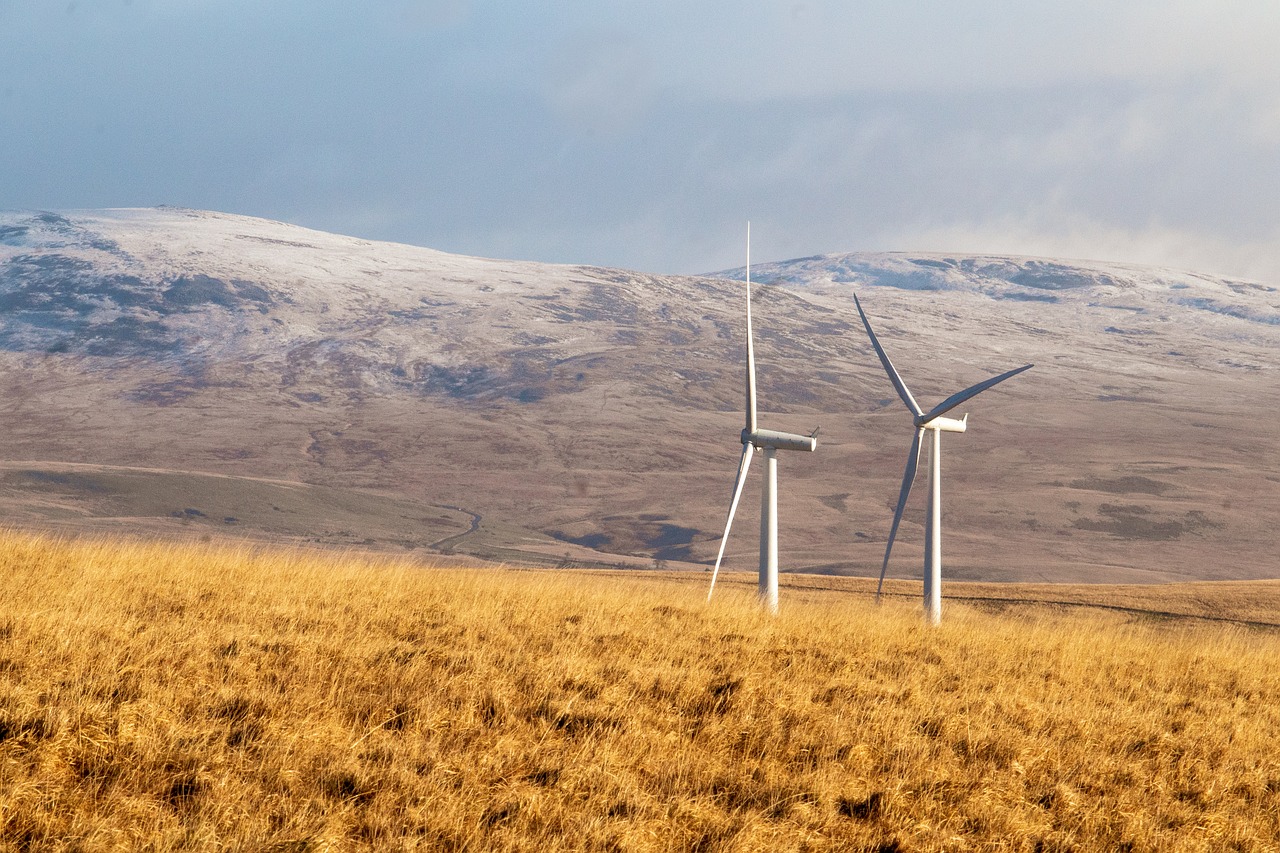
Wind Energy Investments
Investing in wind energy is becoming increasingly attractive for those looking to capitalize on the shift towards sustainable energy solutions. The growth of this sector is not only driven by environmental concerns but also by the potential for substantial financial returns. As the world moves away from fossil fuels, wind energy stands out as a viable alternative, harnessing the power of nature to generate electricity efficiently and sustainably.
One of the key factors contributing to the profitability of wind energy investments is the advancement in technology. Modern wind turbines are more efficient than ever, capable of generating more electricity at lower wind speeds. This technological evolution has led to a significant decrease in the cost of wind energy production. For instance, the levelized cost of energy (LCOE) from wind has plummeted over the past decade, making it one of the most competitive sources of electricity available today. According to recent reports, the LCOE for onshore wind energy has fallen by approximately 70% since 2009.
Furthermore, governments around the globe are recognizing the importance of renewable energy and are implementing supportive policies to encourage investments in wind energy. This includes tax incentives, grants, and subsidies that can significantly enhance the financial viability of wind projects. For example, in the United States, the Production Tax Credit (PTC) offers a substantial financial benefit for each kilowatt-hour of electricity generated by wind farms, thus encouraging more investors to enter this space.
However, while the prospects for wind energy investments are promising, they are not without challenges. The initial capital required for setting up wind farms can be substantial. Investors need to consider factors such as land acquisition, installation costs, and ongoing maintenance. Additionally, the regulatory environment can vary significantly from one region to another, which can impact the feasibility and profitability of wind projects. For instance, some areas may face stringent zoning laws or community opposition, which can delay or even derail projects.
Despite these challenges, the overall outlook for wind energy investments remains positive. The global push for cleaner energy sources is only expected to accelerate, driven by international agreements like the Paris Agreement and the increasing public demand for sustainable practices. In fact, many analysts predict that wind energy could account for a significant portion of the world's energy supply in the coming decades. According to the International Energy Agency (IEA), wind power capacity is expected to grow by over 50% by 2025, presenting a wealth of opportunities for savvy investors.
In conclusion, investing in wind energy offers a unique blend of sustainability and profitability. By understanding the market dynamics, leveraging technological advancements, and navigating the regulatory landscape, investors can position themselves to reap the rewards of this booming sector. As the world continues to embrace renewable energy, wind investments are likely to become a cornerstone of a diversified investment portfolio.
- What are the main benefits of investing in wind energy? Investing in wind energy provides the potential for high returns, supports environmental sustainability, and benefits from government incentives.
- What are the risks associated with wind energy investments? Risks include high initial capital costs, regulatory hurdles, and potential market volatility.
- How can I start investing in wind energy? You can start by researching companies involved in wind energy, investing in renewable energy funds, or even considering direct investment in wind farm projects.
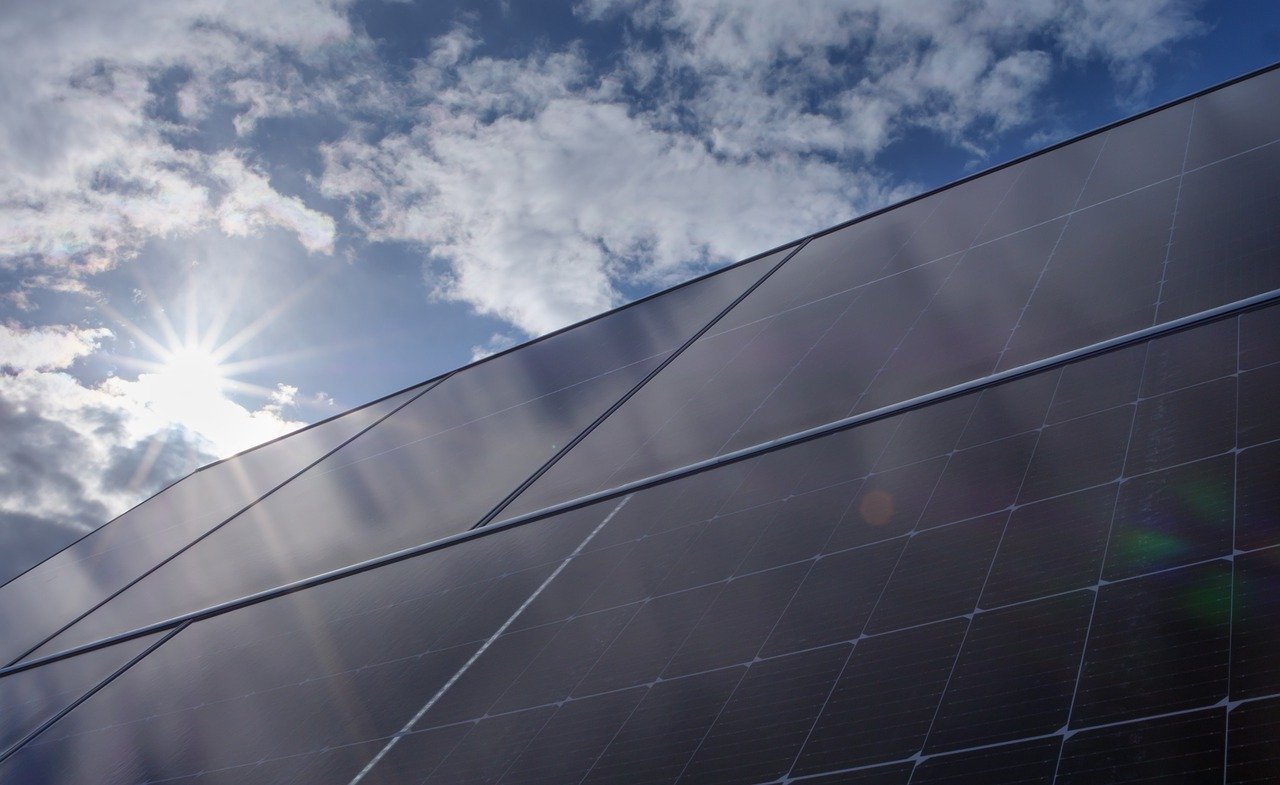
Government Policies and Incentives
When diving into the world of green energy investments, understanding the role of is crucial. These frameworks not only shape the landscape of the renewable energy market but also serve as a catalyst for attracting investors. Governments worldwide are increasingly recognizing the importance of sustainable energy, leading to the implementation of various policies aimed at promoting green investments. This shift is not just a trend; it’s a necessary response to the pressing challenges of climate change and energy security.
One of the most significant ways governments encourage investment in green energy is through subsidies. These financial aids can take many forms, including direct funding for renewable energy projects, tax credits for investors, and grants for research and development. For instance, in the United States, the Investment Tax Credit (ITC) allows investors to deduct a significant percentage of the cost of installing solar energy systems from their federal taxes. This kind of incentive can drastically reduce the upfront costs associated with renewable energy projects, making them more appealing to potential investors.
Moreover, governments often establish renewable energy mandates, which require utilities to obtain a certain percentage of their energy from renewable sources. This not only ensures a steady demand for green energy but also creates a stable market environment for investors. For example, many states in the U.S. have set ambitious renewable portfolio standards (RPS) that compel energy providers to incorporate increasing amounts of renewable energy into their offerings. Such policies foster a competitive market where green energy solutions can thrive.
In addition to subsidies and mandates, government-backed loans and financing options are becoming more prevalent. These initiatives provide the necessary capital for startups and established companies alike to innovate and expand their green energy projects. By reducing the financial barriers to entry, these policies empower more players to join the green energy sector, ultimately driving down costs and increasing profitability for investors. Here's a quick overview of some common incentives:
| Incentive Type | Description | Example |
|---|---|---|
| Tax Credits | Reductions in tax liability for investments in renewable energy. | Investment Tax Credit (ITC) for solar energy. |
| Subsidies | Direct financial support for renewable energy projects. | Grants for wind farm development. |
| Renewable Energy Mandates | Requirements for utilities to source a percentage of energy from renewables. | State-level Renewable Portfolio Standards. |
| Government-Backed Loans | Loans with favorable terms to support green projects. | Loans from the U.S. Department of Energy. |
However, while these policies present numerous opportunities, it’s also essential to consider the potential for changes in government priorities. Political shifts can lead to alterations in funding and support, which may impact investor confidence. Investors must stay informed about the political climate and be prepared to adapt their strategies accordingly. In conclusion, government policies and incentives play a pivotal role in shaping the profitability landscape of green energy investments. By understanding these factors, investors can make more informed decisions and navigate the complexities of this evolving market.
- What are the main government incentives for investing in green energy?
Government incentives typically include tax credits, subsidies, renewable energy mandates, and government-backed loans.
- How do government policies impact the profitability of green energy investments?
Government policies can provide financial support and create a stable market environment, which enhances the profitability of green energy investments.
- Are there risks associated with relying on government incentives?
Yes, political changes can affect the availability and extent of incentives, which may impact investor confidence and project viability.

Risks Associated with Green Energy Investments
Investing in green energy is often seen as a golden opportunity, but like any investment, it comes with its own set of risks. Understanding these risks is crucial for anyone considering entering this vibrant market. One of the primary concerns is market volatility. The green energy sector can be quite unpredictable, influenced by factors such as changing regulations, fluctuating energy prices, and shifts in public sentiment. For instance, a sudden drop in fossil fuel prices can make renewable energy sources less competitive, affecting the profitability of investments.
Another significant risk is related to technological uncertainties. The pace of innovation in the green energy sector is rapid, with new technologies emerging regularly. While this can lead to exciting investment opportunities, it also means that existing technologies can become obsolete quickly. Investors must stay informed about the latest advancements to avoid backing technologies that might soon be outdated. For example, while solar panels have seen remarkable improvements in efficiency, older models may not provide the same return on investment as newer ones.
In addition to market and technological risks, regulatory changes can pose a threat to green energy investments. Governments around the world are increasingly implementing policies aimed at promoting sustainability, but these policies can change. A sudden shift in government priorities or a change in leadership can lead to the withdrawal of subsidies or incentives that have previously supported green energy projects. Investors need to be aware of the political landscape and how it could impact their investments.
Furthermore, the capital intensity of green energy projects can also be a challenge. Many renewable energy ventures require significant upfront investment. This can be a barrier for smaller investors or those looking to diversify their portfolios. The high initial costs can lead to a longer payback period, which might deter some investors who prefer quicker returns.
Finally, it’s important to recognize the environmental risks associated with green energy projects. While renewable energy sources are generally more sustainable, they are not without their environmental impacts. For instance, large solar farms can disrupt local ecosystems, and wind turbines can pose threats to wildlife. Investors should consider the environmental implications of their investments, as negative publicity or local opposition can affect project viability.
In summary, while investing in green energy can be highly rewarding, it is not without risks. Investors should approach this sector with a clear understanding of the potential challenges, including market volatility, technological uncertainties, regulatory changes, capital intensity, and environmental impacts. By being informed and prepared, investors can better navigate the complexities of green energy investments.
- What are the main risks associated with green energy investments? The main risks include market volatility, technological uncertainties, regulatory changes, capital intensity, and environmental impacts.
- How can I mitigate risks in green energy investments? Staying informed about market trends, diversifying your portfolio, and understanding regulatory environments can help mitigate risks.
- Are government incentives reliable for green energy investments? While government incentives can enhance profitability, they are subject to change and should be monitored regularly.
- What is the future outlook for green energy investments? The future looks promising due to advancements in technology and a growing emphasis on sustainability, but investors should remain cautious about potential risks.
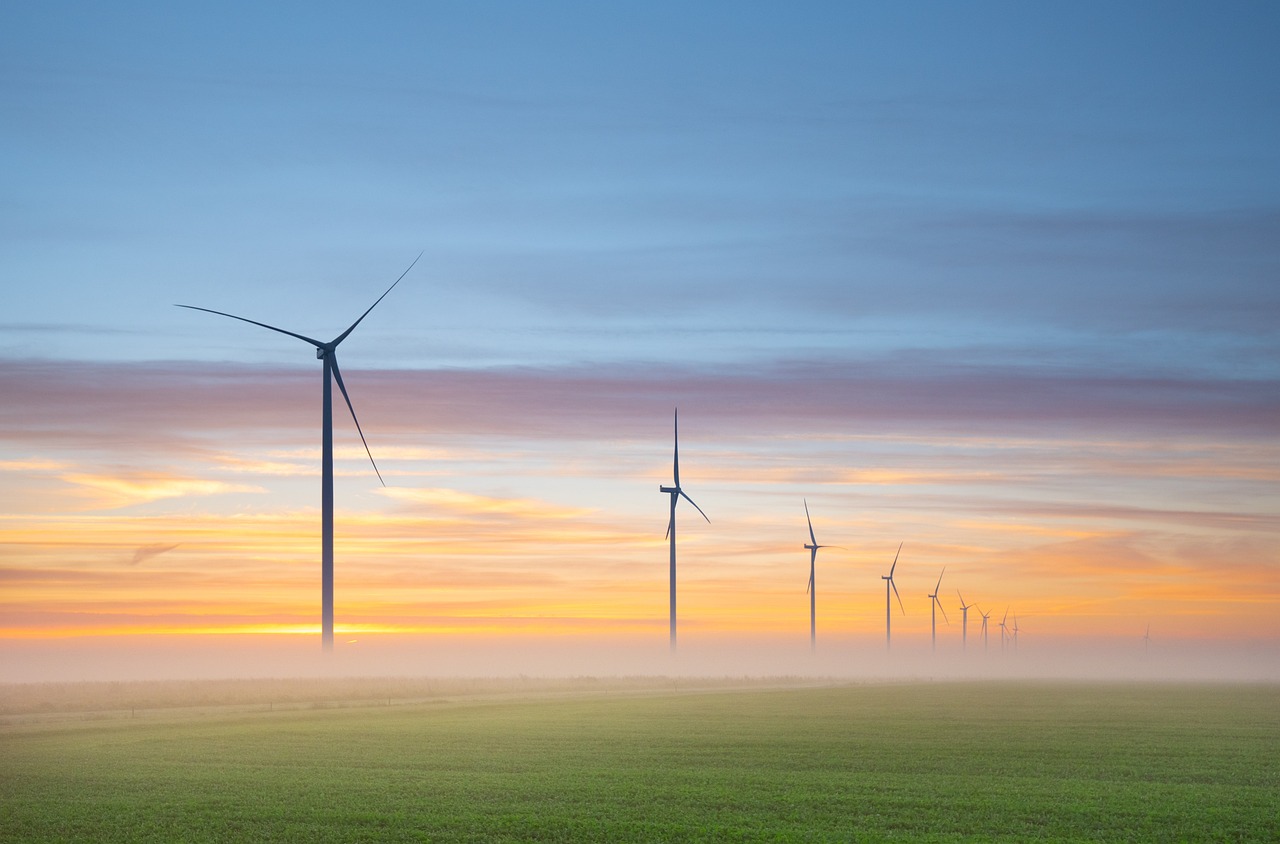
Technological Risks
When it comes to investing in green energy, are a significant concern that potential investors must take into account. The rapid pace of innovation in this sector means that what is cutting-edge today could become obsolete tomorrow. For instance, consider solar panels; advancements in photovoltaic technology are occurring at breakneck speed, which raises the question: how can investors ensure that their investments remain relevant and profitable in such a dynamic environment?
One of the primary technological risks lies in the potential for obsolescence. As new technologies emerge, older systems may lose their competitive edge. This is particularly true in the renewable energy sector, where innovations can drastically reduce costs and improve efficiency. For instance, the advent of more efficient solar cells or advanced wind turbine designs can render older models less desirable. Investors need to stay informed about industry advancements to mitigate these risks. Regularly attending industry conferences, subscribing to relevant publications, and engaging with experts can provide valuable insights into upcoming trends.
Moreover, the integration of new technologies can introduce complexities. For example, transitioning to a new energy management system may require substantial investment in training and infrastructure. If a company is slow to adapt, it risks falling behind competitors who are more agile. This can lead to a significant loss of market share and profitability. Therefore, understanding the technological landscape and being prepared to pivot when necessary is crucial for investors.
Another aspect to consider is the regulatory environment surrounding technology in the green energy sector. Governments often implement regulations that can either support or hinder technological advancement. For instance, subsidies for certain technologies may encourage their adoption, while stringent regulations may stifle innovation. Investors should keep a close eye on policy changes that could impact the technologies they are investing in. A well-informed investor will not only look at current technologies but also anticipate how potential regulatory shifts could affect their investments.
In summary, while investing in green energy presents exciting opportunities, it is essential to be aware of the involved. By staying informed about technological advancements, understanding the potential for obsolescence, and being vigilant about regulatory changes, investors can better navigate the complexities of this vibrant sector. The key is to maintain a proactive approach, ensuring that investments remain robust and adaptable in a constantly evolving market.
- What are technological risks in green energy investments?
Technological risks refer to the potential for obsolescence, the pace of innovation, and the complexities of integrating new technologies that can impact the profitability of investments in the green energy sector. - How can investors mitigate technological risks?
Investors can mitigate these risks by staying informed about industry advancements, attending conferences, and understanding how regulatory changes may affect their investments. - Why is it important to monitor regulatory environments?
Regulatory environments can significantly influence technological adoption and investment viability, making it crucial for investors to stay updated on policy changes.

Market Volatility
When it comes to investing in green energy, understanding is crucial. Just like the weather, the green energy market can experience sudden changes that can catch even seasoned investors off guard. Factors such as global events, policy changes, and technological advancements can cause fluctuations in investment returns. For instance, a sudden shift in government regulations or a breakthrough in renewable technology can either skyrocket or plummet the value of your investments. So, how do you navigate these unpredictable waters?
One of the primary contributors to market volatility in the green energy sector is the rapid pace of technological innovation. As new technologies emerge, older ones can quickly become obsolete, leading to shifts in market demand. Take solar energy, for example. The introduction of more efficient solar panels can make previous models less desirable, affecting the companies that produce them and, consequently, their stock prices. This cycle of innovation is both exciting and risky, as investors must stay informed about the latest developments to make sound decisions.
Another significant factor is regulatory changes. Governments around the world are increasingly focused on sustainability, but the rules governing green energy can vary widely between regions. For instance, a country may introduce a new subsidy for wind energy, boosting its market attractiveness, while simultaneously rolling back incentives for solar energy. Such changes can create a ripple effect, influencing investor confidence and market stability. To illustrate this point, consider the following table that outlines recent regulatory changes and their impacts on different energy sectors:
| Country | Energy Source | Regulatory Change | Impact on Market |
|---|---|---|---|
| USA | Solar | Increased Tax Credits | Market Growth |
| Germany | Wind | New Subsidies | Investment Surge |
| China | Hydroelectric | Stricter Regulations | Market Contraction |
Moreover, external factors such as global economic conditions can also play a significant role in market volatility. Economic downturns can lead to reduced investments in renewable energy projects, as funds are redirected to more immediate concerns. Conversely, a booming economy may lead to increased investment in green technologies as companies and governments alike strive to meet sustainability goals. Investors must keep an eye on these larger economic trends to anticipate potential impacts on their portfolios.
In summary, while market volatility in the green energy sector can be daunting, it also presents opportunities for those who are willing to do their homework. By staying informed about technological advancements, regulatory changes, and global economic conditions, investors can better position themselves to navigate the ups and downs of the market. Remember, the key to successful investing is not just about picking the right stocks, but also about understanding the environment in which those stocks operate.
- What causes market volatility in green energy? Market volatility can be caused by technological advancements, regulatory changes, and global economic conditions.
- How can investors manage risks associated with market volatility? Staying informed and diversifying investments can help mitigate risks related to market fluctuations.
- Are there specific sectors within green energy that are more volatile? Yes, sectors like solar and wind energy can be particularly sensitive to technological changes and regulatory shifts.

Future Prospects of Green Energy Investments
As we look towards the horizon of green energy investments, the future appears not only bright but also incredibly promising. With the world increasingly prioritizing sustainability, the demand for renewable energy solutions is set to surge. This trend is driven by a combination of technological advancements, shifting government policies, and a growing awareness of climate change among consumers and businesses alike. Imagine a world where energy is not just a commodity, but a sustainable resource that contributes to the health of our planet. That's the vision that fuels the green energy sector today.
One of the most exciting prospects in green energy is the rapid pace of technological innovation. Innovations in solar panel efficiency, battery storage capabilities, and wind turbine design are revolutionizing how we harness and store energy. For instance, advancements in solar technology have led to the development of bifacial solar panels that can capture sunlight from both sides, significantly increasing energy output. Similarly, the rise of smart grids is enabling more efficient energy distribution, reducing waste and improving reliability. These technological breakthroughs not only enhance the viability of green energy but also present lucrative investment opportunities.
Moreover, government policies worldwide are increasingly favoring renewable energy. Many countries are implementing ambitious renewable energy targets as part of their commitments to the Paris Agreement. This includes not just subsidies and tax incentives for renewable energy projects but also penalties for carbon emissions, which can further incentivize businesses to transition to greener alternatives. Investors who align their portfolios with these policies are likely to benefit from a favorable regulatory environment. For example, the U.S. government has introduced various tax credits for solar and wind energy investments, which can significantly enhance profitability.
But it’s not just about government support; consumer preferences are also evolving. A growing number of consumers are making purchasing decisions based on sustainability. Companies that prioritize green energy solutions are likely to attract a loyal customer base, which translates into increased revenues and, ultimately, higher returns for investors. According to recent studies, businesses that adopt sustainable practices can see their market value increase by up to 20% compared to their less sustainable counterparts.
However, while the future looks promising, it’s essential to remain cautious. The green energy sector is not immune to challenges. Market dynamics can shift rapidly, and technological advancements may lead to unforeseen disruptions. Therefore, investors must stay informed and adaptable. Diversifying investments across various renewable energy sources—such as solar, wind, and hydroelectric—can mitigate risks associated with market volatility.
In summary, the future of green energy investments is filled with potential. With a combination of technological advancements, supportive government policies, and changing consumer preferences, investors have a unique opportunity to contribute to a sustainable future while achieving profitable returns. The key will be to remain vigilant and responsive to the ever-evolving landscape of the green energy sector.
- What are the main benefits of investing in green energy? Investing in green energy can lead to long-term profitability, support sustainable practices, and align with global efforts to combat climate change.
- Are there risks associated with green energy investments? Yes, risks include market volatility, regulatory changes, and technological uncertainties. It’s essential to conduct thorough research before investing.
- How can I start investing in green energy? You can start by exploring renewable energy stocks, mutual funds focused on sustainability, or direct investments in renewable energy projects.
Frequently Asked Questions
- What are green energy investments?
Green energy investments refer to putting money into renewable energy sources, such as solar, wind, and hydroelectric power. These investments are significant as they contribute to sustainability and help combat climate change, making them increasingly attractive to investors looking for both profits and positive impact.
- Are green energy investments profitable?
Yes, green energy investments can be highly profitable. With the growing demand for sustainable energy solutions and advancements in technology, many investors are seeing substantial returns. However, like any investment, profitability can vary based on market conditions and individual project performance.
- What are the risks associated with investing in green energy?
Investing in green energy does come with risks, including market volatility, regulatory changes, and technological uncertainties. It's crucial for investors to be aware of these risks and conduct thorough research before committing their funds to ensure they can manage potential downsides effectively.
- How can government policies impact green energy investments?
Government policies play a vital role in shaping the green energy landscape. Subsidies, tax incentives, and supportive regulations can enhance the attractiveness of green energy investments, boosting investor confidence and potentially leading to higher returns.
- What types of renewable energy sources should I consider for investment?
Some popular renewable energy sources for investment include solar, wind, and hydroelectric power. Each has its unique advantages, challenges, and market potential, so it's essential to evaluate them based on your investment goals and risk tolerance.
- How do technological advancements affect green energy investments?
Technological advancements can significantly impact green energy investments by improving efficiency and reducing costs. Staying updated with industry innovations is crucial for investors to mitigate risks related to obsolescence and to capitalize on emerging opportunities.
- What should I know about market trends in green energy?
Understanding market trends is key to making informed investment decisions. Currently, there is a strong upward trend in green energy demand, driven by global sustainability goals and advancements in technology. Keeping an eye on these trends can help investors identify profitable opportunities.



















